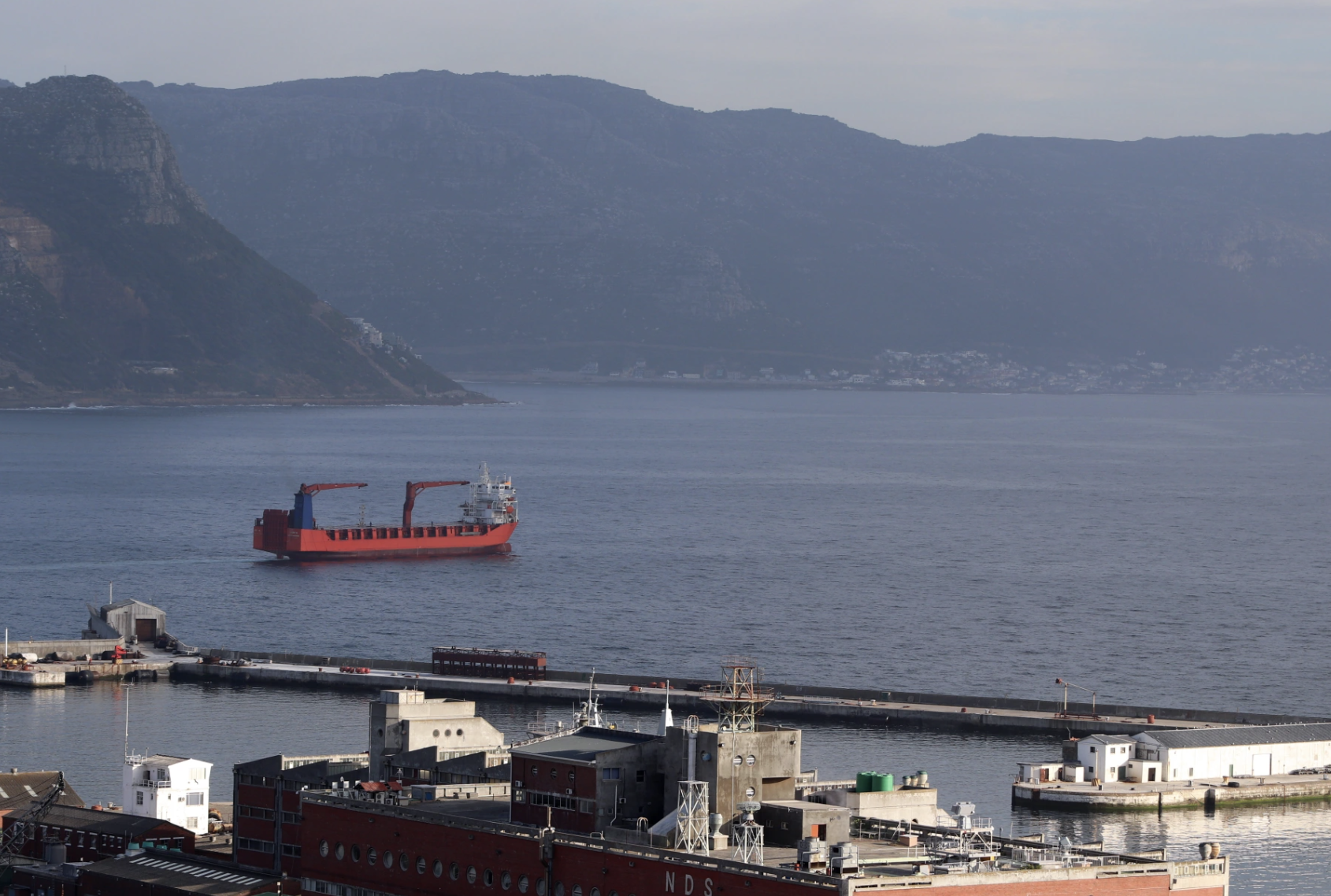News
The Night Simon’s Town Became Vladimir Putin’s Town
Former president Jacob Zuma paid a heavy price for the Gupta takeover of Waterkloof. Unless an explanation for the Russian intervention at Simon's Town is forthcoming, the country will pay a higher price.

Former Director, The Brenthurst Foundation

Former Research Director, The Brenthurst Foundation

On Wednesday and Thursday night, Russia appears to have taken over South Africa’s major naval base in Simon’s Town near Cape Town, apparently in breach of international conventions and without disclosure by government of what was transpiring.
Not since the Guptas took over Waterkloof Airforce Base to land a planeload of wedding-goers has the South African military been compromised in this way.
The ship at the centre of this latest moment of South African silliness, was the Lady R, a Russian cargo vessel which has been sanctioned, is described by David S Feldmann, US Embassy spokesman in Pretoria as “part of Russia’s military export-import business”.
Mysterious and as yet unidentified cargo was moved on and off the ship in the presence of armed men under the cover of rolling blackout darkness with no official explanation forthcoming. Whatever was going on is unlikely to have been, to coin a nautical phrase, ‘above board’.
At the very least South Africa has ignored international maritime procedure and naval contingencies.
The rules that apply to others — but not, it seems, to the Russians — include those which require foreign ships to abide by the International Conventions for the Safety of Life at Sea (Solas) to keep their Automatic Identification System (AIS) on at sea at all times. Solas requires keeping a listening watch on Channel 16 for emergencies and communication with Cape Town’s Maritime Rescue Coordination Center (MRCC).
The AIS uses transceivers on ships like those on aircraft, which are used to communicate identification, position, course, and speed in order to avoid accidents and to track the movement of vessels.
Before Lady R went silent on AIS and comms and snuck into Simon’s Town, it did communicate with the MRCC, saying it had mechanical problems, justifying the use of the naval harbour rather than the commercial harbour at Cape Town.
It seems curious that, rather than attend to repairs, the ship proceeded to take on cargo and offload other cargo.
In any event, there are a set of obligatory rules required before entering a Navy harbour for warships and auxiliaries that principally revolve around weapon and cargo safety, good order and conduct of crews. These are agreed on during voyage preparations and are checked on arrival. In this case, no one seemed to know anything about anything.
So what might be in those midnight lorry loads shipped to and from the Lady R?
It’s unlikely to be big military kit. Even though South Africa retains considerable stocks of pieces of large equipment like G5s and G6s, this is very unique and quite distinct and will become visible at some point. They are not that stupid and or brazen are they?
It’s not what South Africans want. This would fly in the face of what the majority of South Africans prefer on Ukraine, as a recent survey showed. In a poll conducted last month on behalf of The Brenthurst Foundation, 74.3% of South Africans believe that Russia’s invasion of Ukraine is “an act of aggression that must be condemned” while only 12.7% believe it is “an acceptable use of force”.
If it’s anything, it’s likely to be smaller stuff, or material needed to manufacture arms and munitions. Attempts by the Democratic Alliance to find out, in parliament, whether South Africa has arms dealings with Russia have so far been sidestepped. In response to a written question posed as to whether SA sells the Russian Federation any arms, ammunition, propellant or explosives, Defence Minister Thandi Modise replied in August that Armscor is a defence company which exploits commercial opportunities, and which may from time to time enter into agreements with the Russian Federation. She added, “it will not be possible to divulge any detail regarding the specifics of agreements of this nature.”
Nothing unexpected there. Not that the ANC government ever really answers questions. This has become a hallmark of the Ramaphosa presidency in particular. It’s hard to recall when last the President took questions in Parliament or at a media briefing.
The failure to disclose the nature, purpose and actions undertaken related to this vessel is going to fuel speculation that South Africa is working with Russia to break sanctions and, perhaps, to go all the way and enter the war in Ukraine on Russia’s side.
The harm done by the ANC leadership’s reckless flirtation — against the wishes of voters — with Vladimir Putin and his oligarchs, is massive. It is as politically short-sighted as it is morally inexplicable.
Make no mistake, these actions are closely watched by SA’s erstwhile Western friends. Slipping a Russian ship into South Africa’s naval HQ is one thing (and not a small thing in itself); sneaking contraband would be another altogether.
Former president Jacob Zuma paid a heavy price for the Gupta takeover of Waterkloof. Unless an explanation for the Russian intervention at Simon’s Town is forthcoming, the country will pay a higher price.
This article originally appeared on the Daily Maverick
Photo: Daily Maveric


